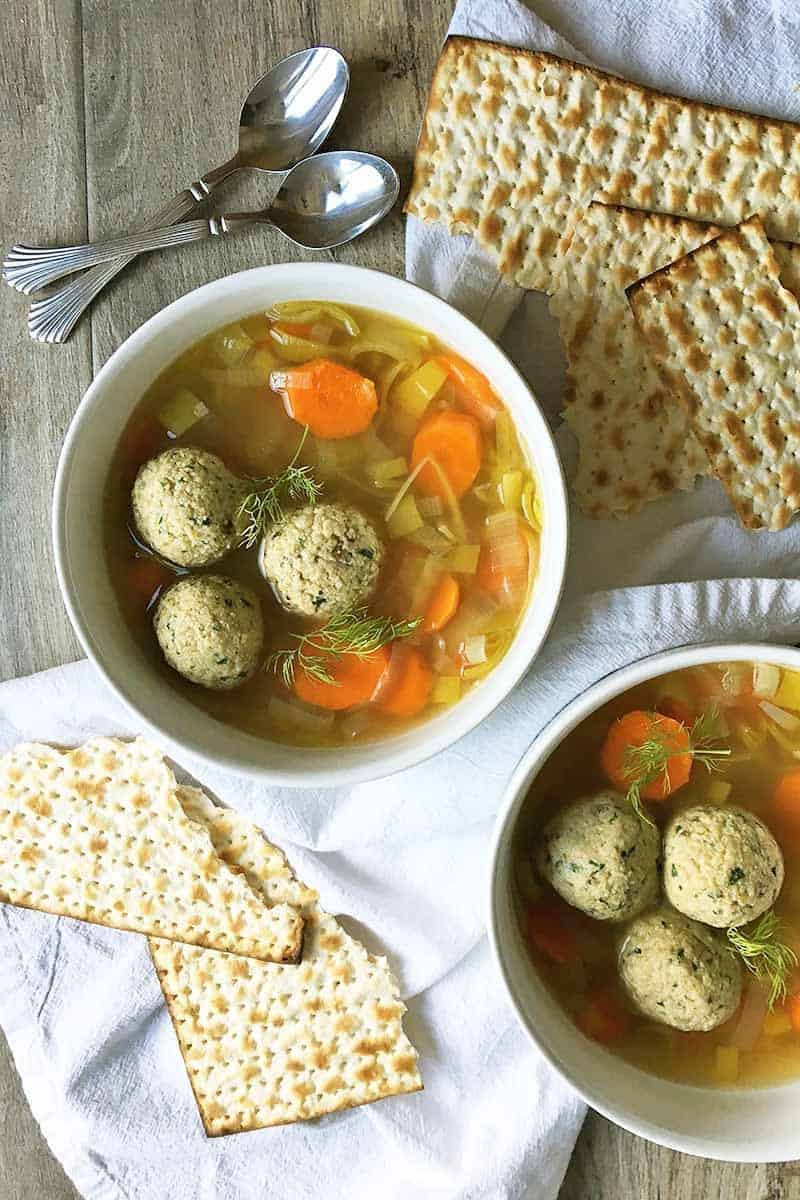We’re launching this new recipe series just in time for Passover, with two dishes from JCP’s own Gila Golder, our Community Impact Associate. Do you have a beloved family dish, a creative twist on a classic, or brand new concoction you’d like to share with Jewish Memphis? Pitch your idea to Matt Timberlake at mtimberlake@jcpmemphis.org.
Homemade Matzo Balls
In my family growing up, we always used the Manischewitz boxed mix to make matzo balls. My brother and I used to sneak a taste of the raw batter before it was shaped and boiled in the soup. I noticed that the batter was always really salty for some reason, but the cooked matzo balls were never salty. I’m sure there’s a culinary or scientific reason for that, but I don’t know what it is.
When I started making Passover for the first time as an adult, I decided to try making matzo balls from scratch. There are tons of recipes out there, many calling for seltzer or club soda to produce the “fluffy” effect everyone seems to love. Personally, I have always preferred my matzo balls small and dense. I created my own recipe, adding Passover-certified soy sauce to the batter to replicate the saltiness of the boxed mix. My husband and I love the result, and the recipe is adaptable for those who like the “fluffy” kind. For additional heresy, we serve these dense matzo balls in a vegetarian soup with carrots and leeks. If you’re serving a crowd (as I usually am), you’ll want to double or triple the base recipe.
1 cup matzo meal
A few pinches onion powder and dried parsley or basil
A few tablespoons Passover soy sauce
2 eggs
A few tablespoons of water to thin it out, more if you like your matzo balls light and fluffy
Mix all ingredients with a fork until you get the texture you want. For my dense matzo balls, I like the batter to be pretty thick, but you can thin it with extra water according to personal preference. Cover the bowl and let it sit in the fridge for at least 15 minutes, then with wet hands, shape into little balls and drop them into boiling soup (it’s best if you cook them directly in the soup, but you can also cook in boiling water, then remove with a slotted spoon and add to soup later). Let them cook in the soup for at least 30 minutes to firm up.
Seder appetizer plate
As the Children of Israel were wandering in the desert, God provided them with manna and they complained, saying, “We remember the fish that we ate in Egypt free of charge, the zucchini [some translate this as cucumber], the melons, the leeks, the onions, and the garlic” (Parshat Beha’alotcha, Numbers 11:5). Can you imagine the chutzpa— immediately after being rescued from slavery and oppression and having all our needs provided for, and we’re already complaining about the food and romanticizing our enslavement? My husband and I created this dish, which we serve as a plated appetizer at the Seder, as a zecher (remembrance) of this episode.
(Per plate— multiply by number of guests)
About ½ cup sautéed leeks and zucchini seasoned with salt, pepper, and fresh garlic (or omit the zucchini and add a few slices of fresh cucumber to the plate)
2 slices of melon (we like to use honeydew)
A few slices of gefilte fish, or a fresh white fish if you prefer, like cod
My suggested presentation is to serve the leeks and zucchini as a topping for the fish in the center of the plate and then arrange the melon and cucumber, if using, along the perimeter. For vegetarians, omit the fish. The cooked vegetables can be served warm or room temperature.
